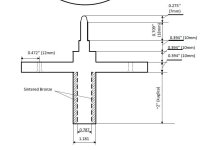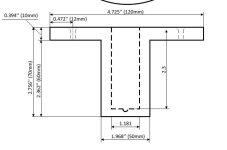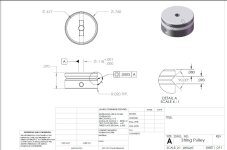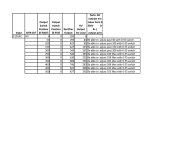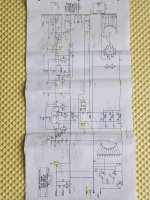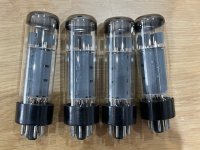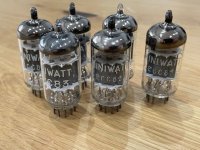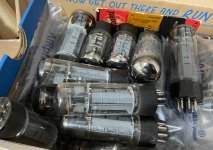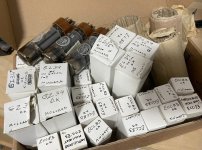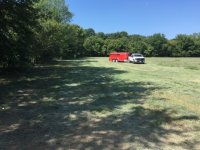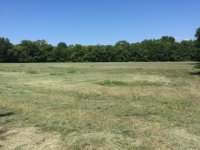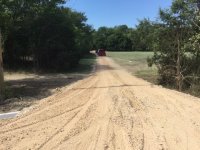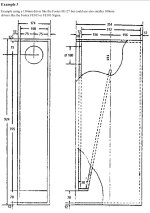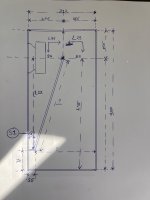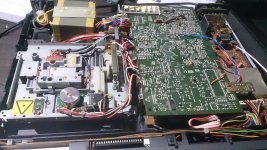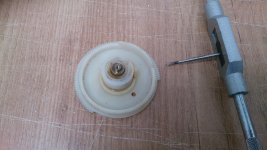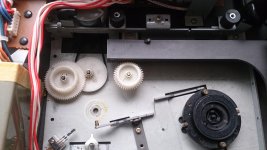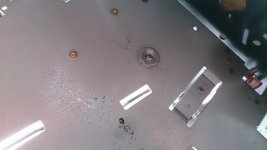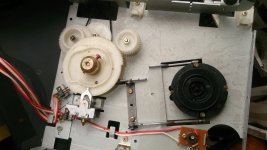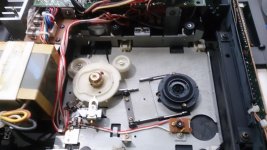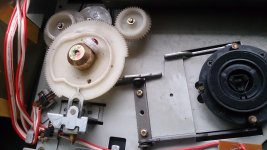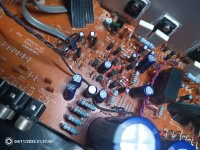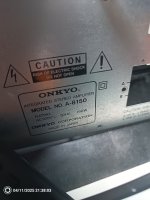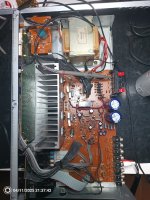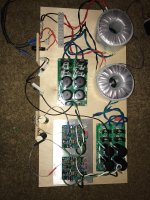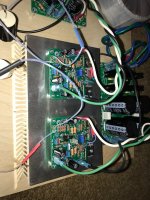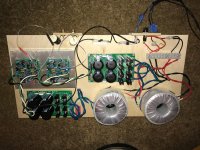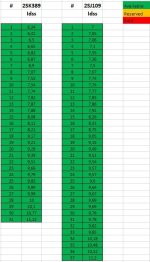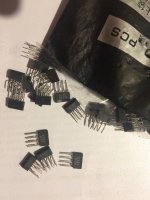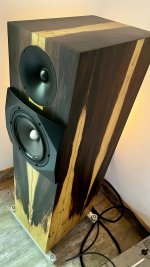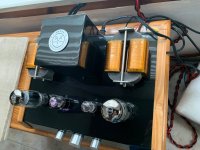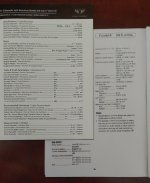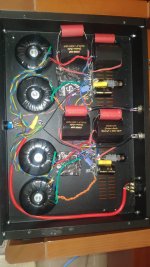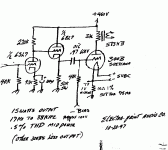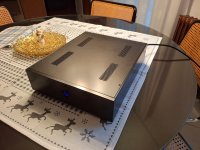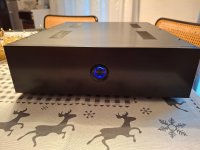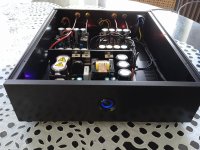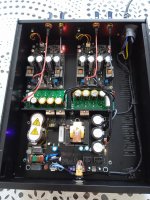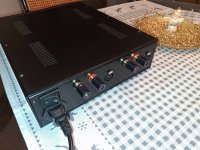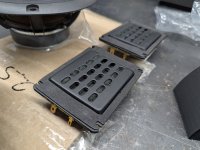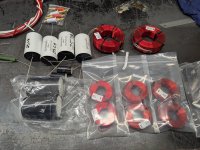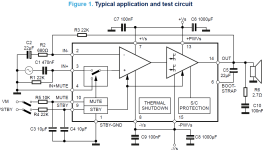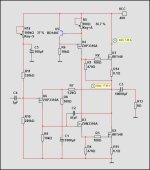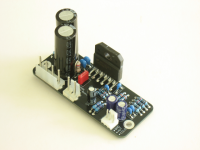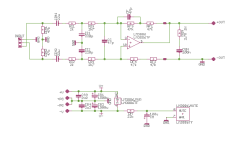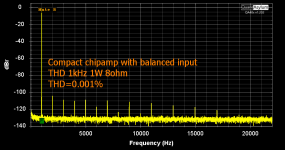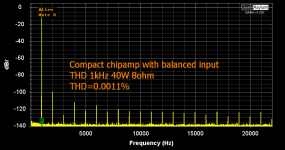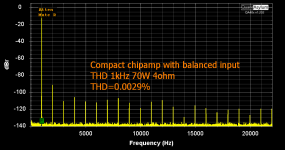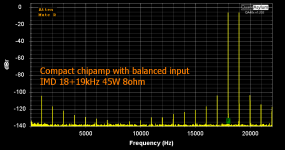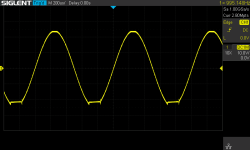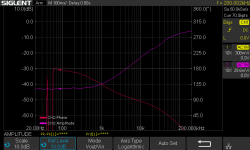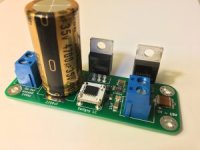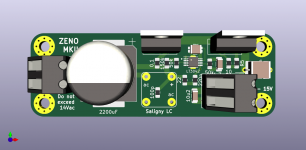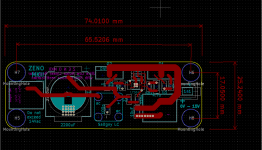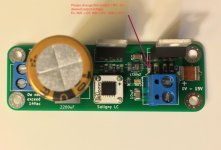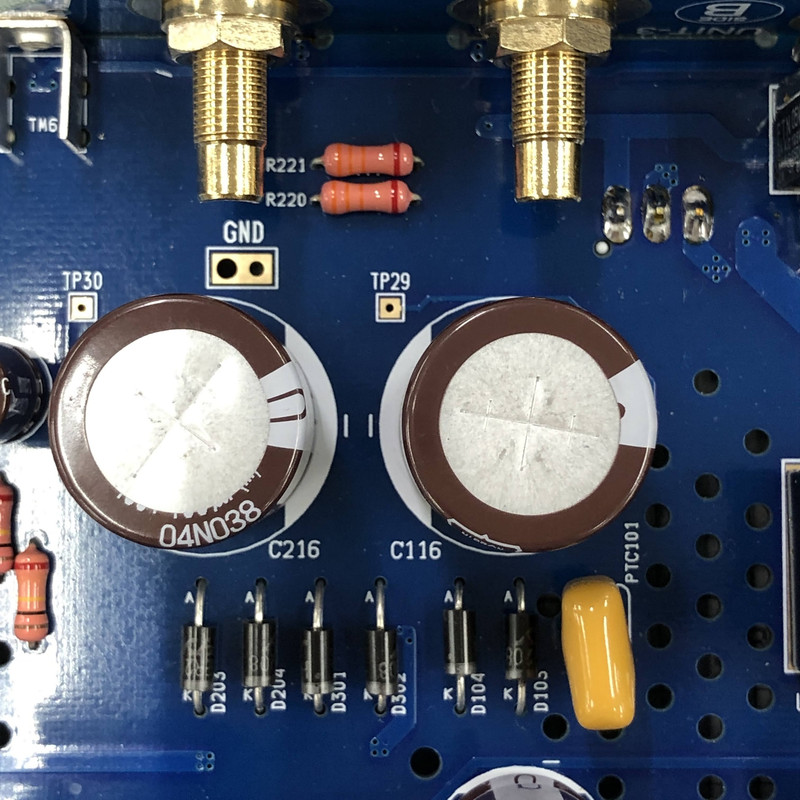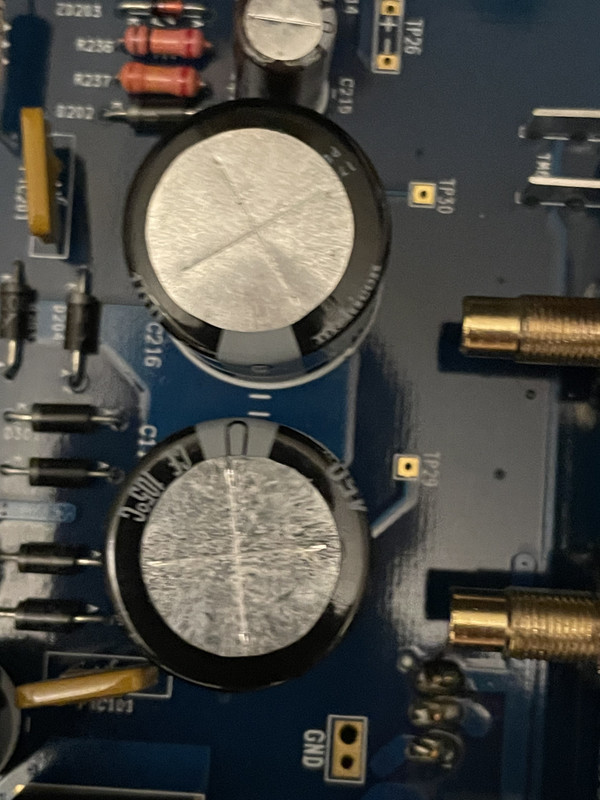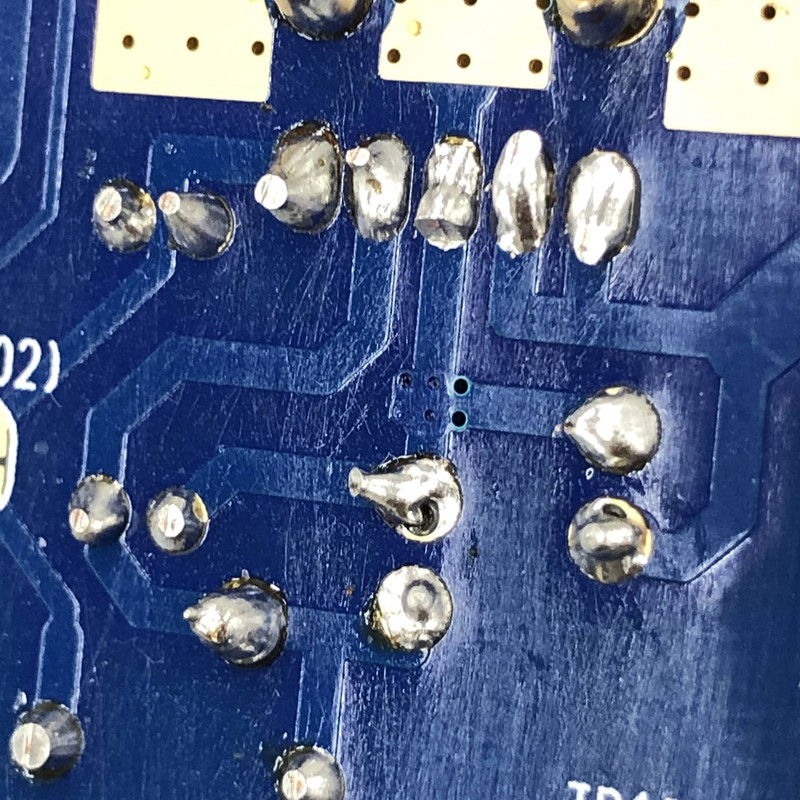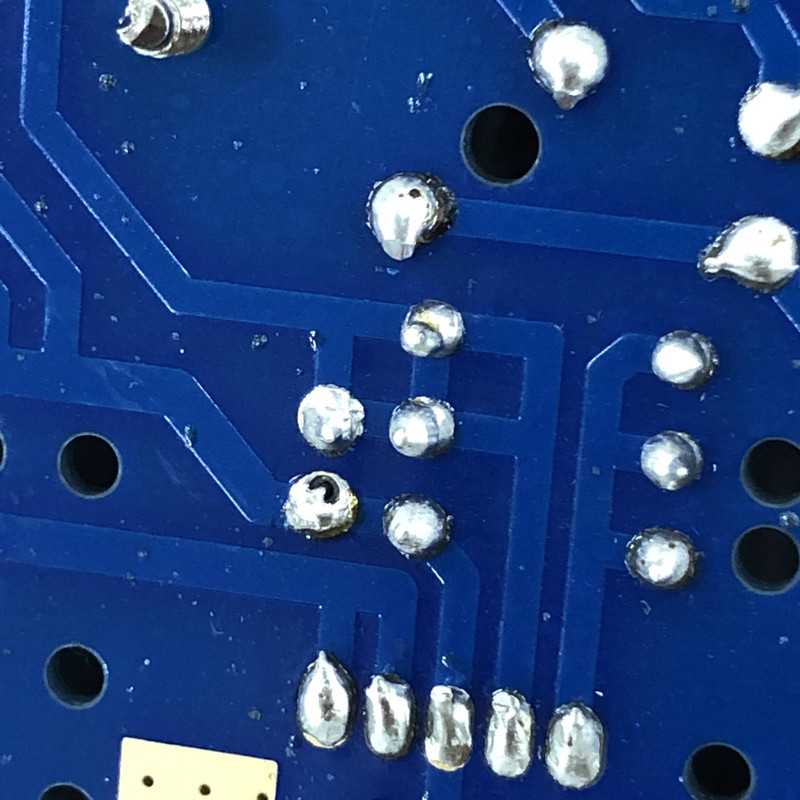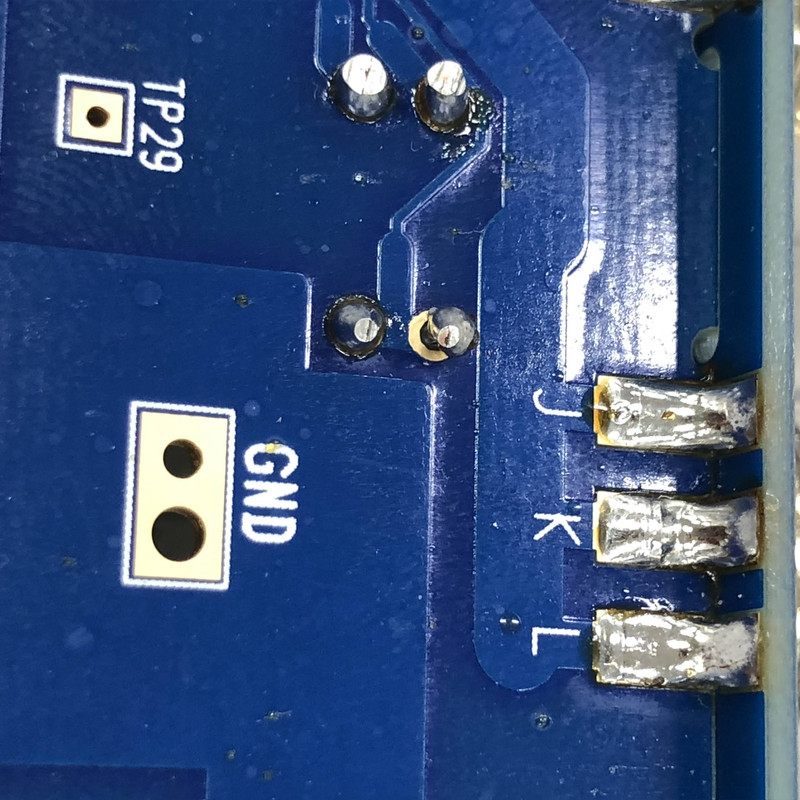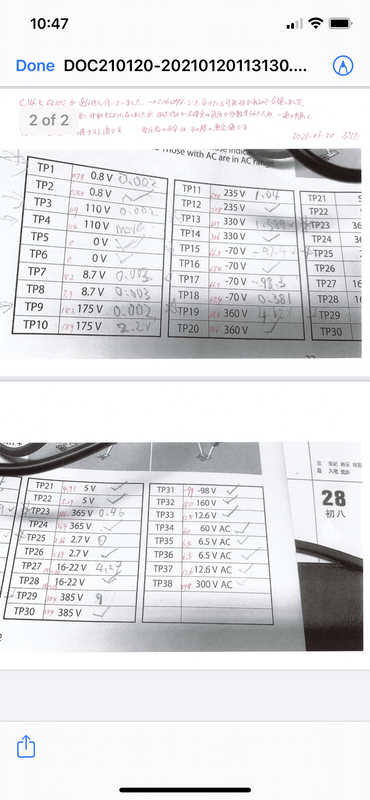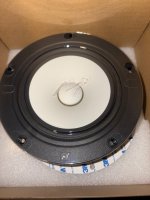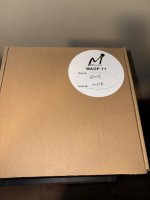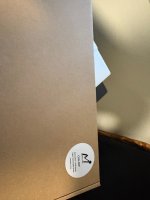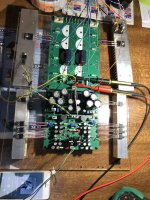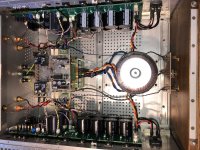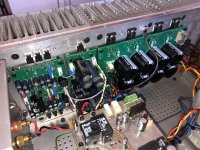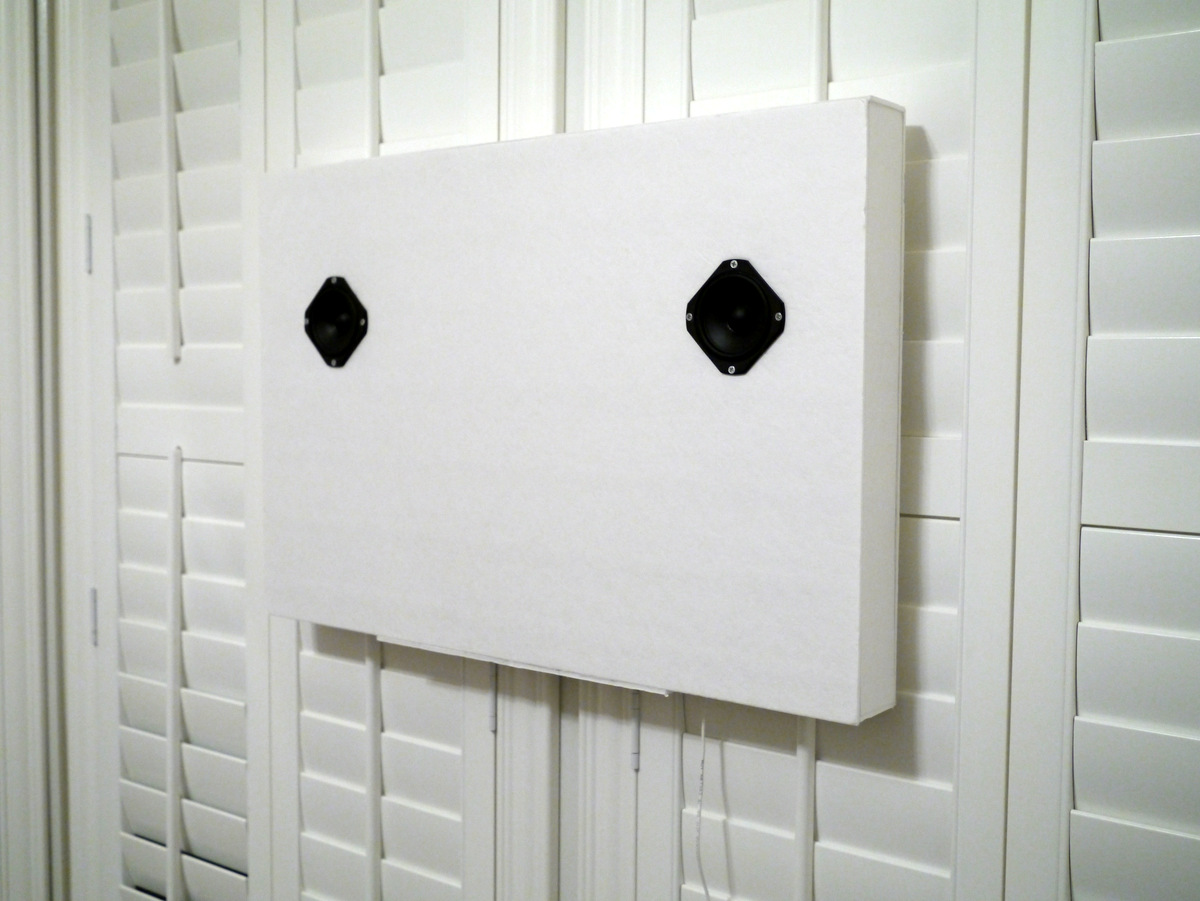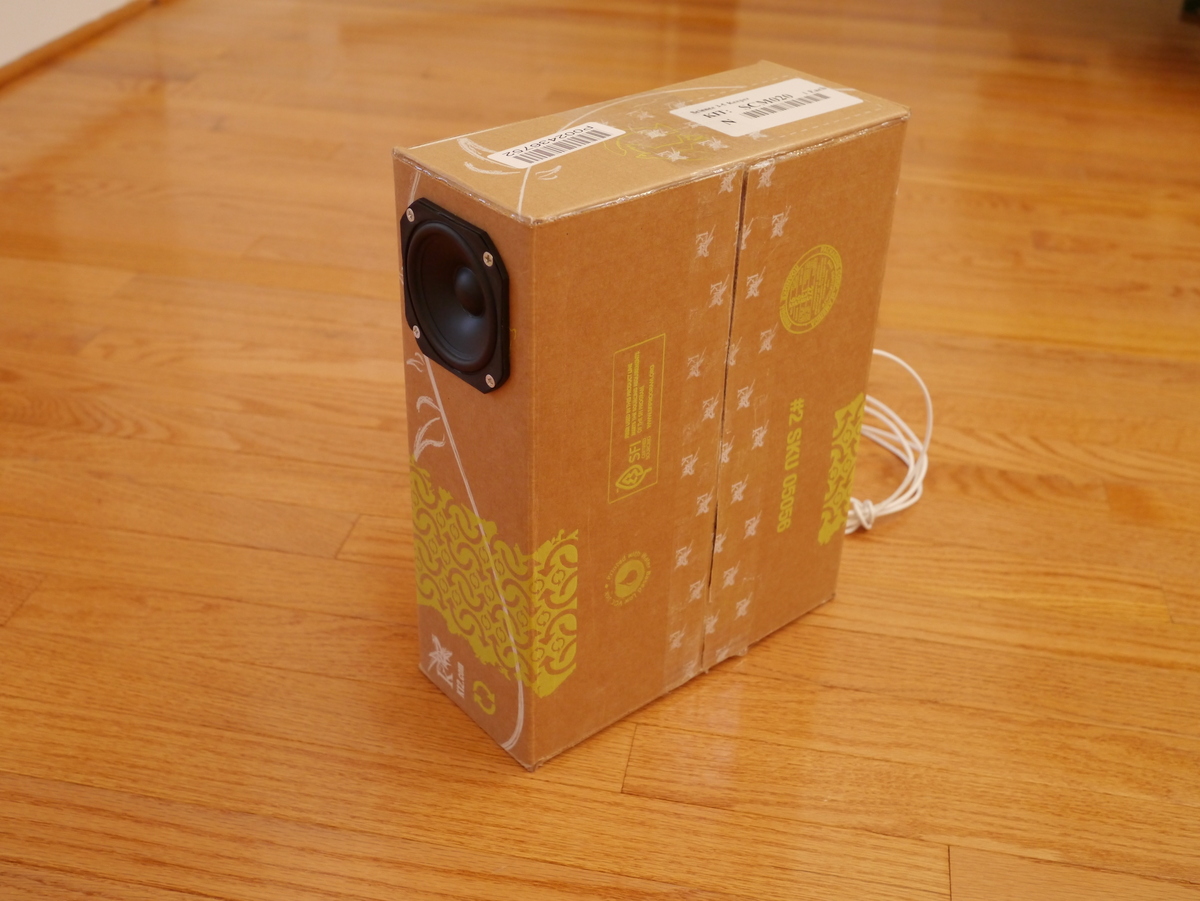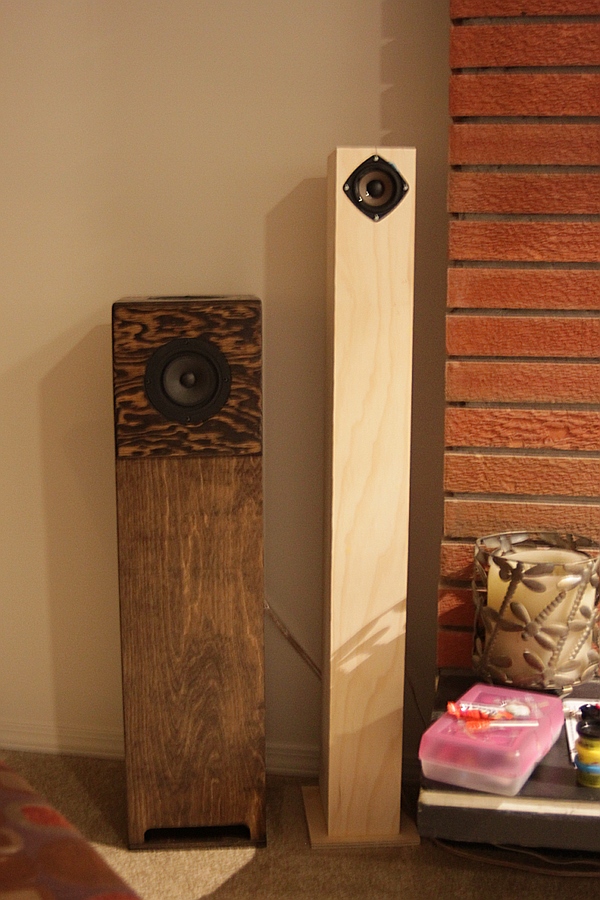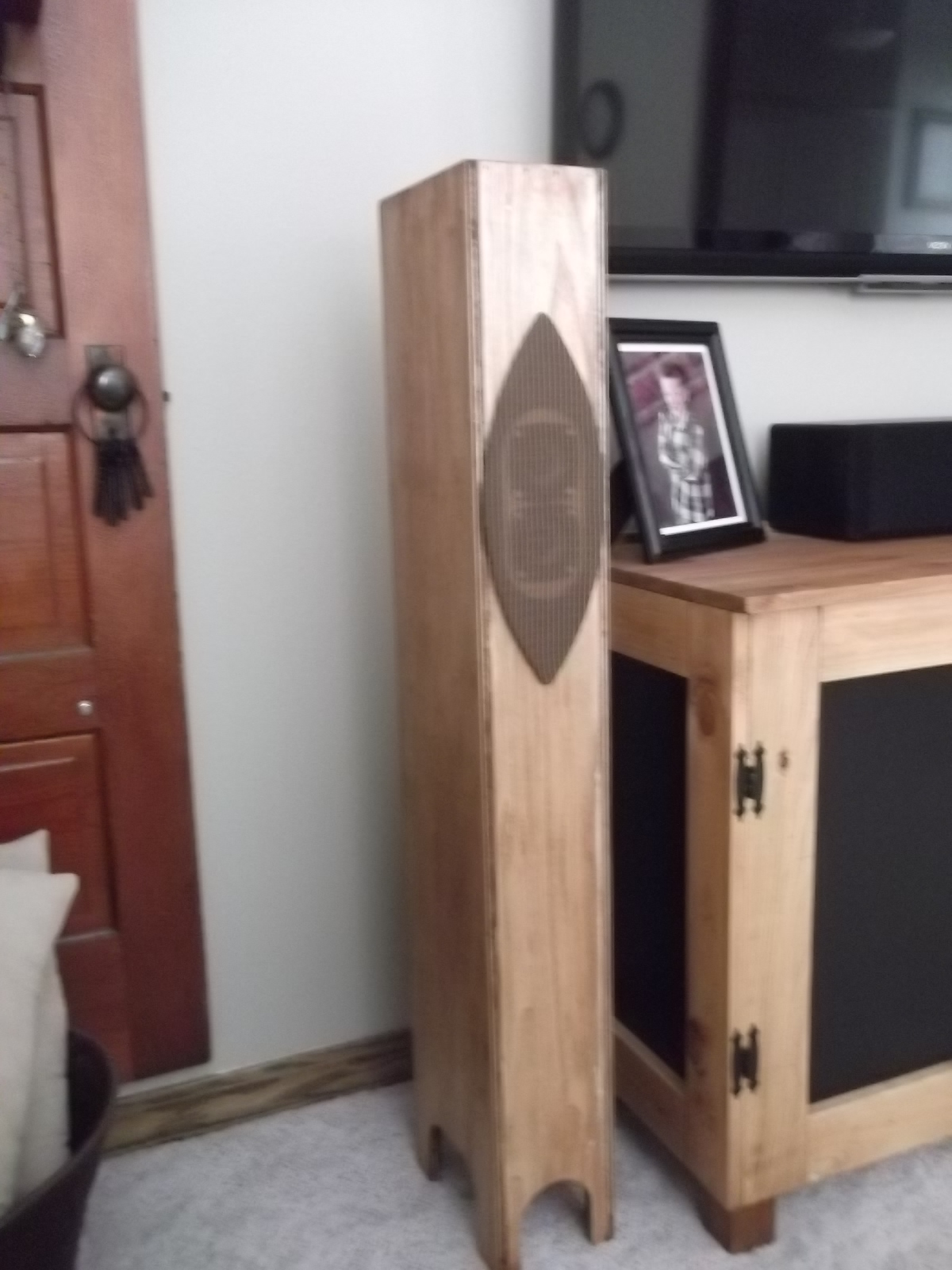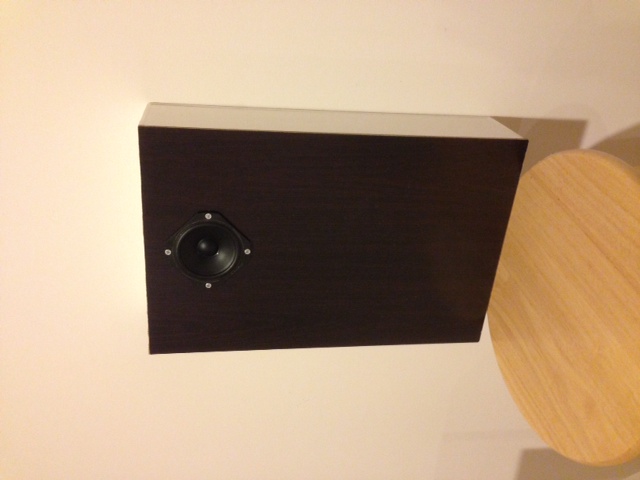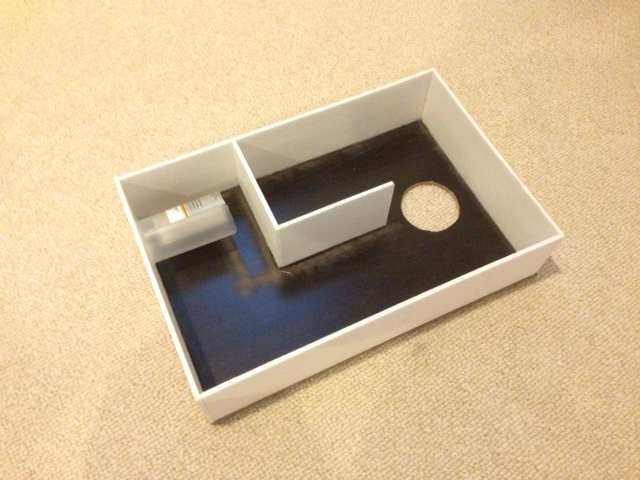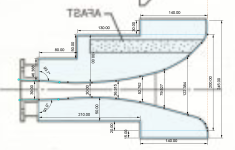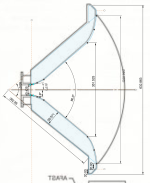I wasn't quite sure if this should go in Digital source or PC based so I'll put it here.
I was interested to hear from anyone who has used Tidal or Qobuz on a high quality system (eg not earbuds, car etc) and what they thought of the sound quality, music catalogue etc.
First a confession.
😱 Like many of you I build and tweak speakers and take sound quality very seriously. For many years I used to "sample" music online and anything I liked enough I bought on Redbook CD...
Then when iTunes switched from 128kbit DRM AAC to 256kbit non-DRM AAC I got a bit lazy and started buying albums from iTunes knowing full well that they didn't sound quite as good as an actual CD...but they sounded "close enough" for most music, and could still sound pretty good on a good system, and convenience was the driving factor.
Then a number of years after that I first tried Spotify, lured in by the low monthly cost and more or less unlimited access to browse and instantly play nearly any music and got hooked on the easy discovery of new music. I figured that anything I really liked I would buy the CD's for, but I never did!
😱
Some of you may know that Spotify is alone in using Ogg Vorbis with other services using either MP3 or AAC. Personally, I don't like the sound signature of Ogg Vorbis. Of the three I would rate AAC as the best with Ogg Vorbis considerably worse and MP3 marginally worse than Ogg Vorbis.
My music collection has been a mixture of CD's, CD's ripped to Flac, CD's ripped to AAC, older "acquired" MP3 rips, and Spotify, and after moving country once and house twice since then I no longer even own a CD player, despite keeping my CD's for possible future ripping to FLAC.
My main digital music playback system is now a Raspberry Pi 4 running Volumio with a Behringer UMC204HD USB DAC.
I was recently going through some old CD's and decided to try playing one for the first time in years - the only thing I have that will even take an optical disc now is an Xbox one! This goes to the TV via HDMI and the headphone analogue output of the TV then goes to the amplifier. Hardly an ideal signal path - fine for watching TV Shows and Movies but not what I would want to use for Music.
Surprisingly or perhaps not surprisingly despite this tortuous signal path there was no doubt that the CD played via the Xbox one and TV to the amplifier sounded better than the Spotify version of the album through a much better quality DAC. Much better. I tried many CD's and the result was the same - I had forgotten how good CD's sounded compared to lossy codecs after years of conditioning (brainwashing ?) by listening to lossy audio...
😱
I decided enough was enough and that it was time to research music streaming services that offer lossless audio, which didn't exist back when I first joined Spotify many years ago but now did exist.
So I came across Qobuz and Tidal who seem to be the two main players right up until the very recent announcement of Amazon Music HD. (More on that later)
As it happens, Volumio with the MyVolumio subscription supports full quality playback of both Tidal and Qobuz out of the box, (as well as playing my local FLAC, AAC, MP3 content and Spotify as well) making it very easy to do direct comparisons of the different sources using the same software and same DAC.
So I signed up for a free month trial of Qobuz which runs out in about 10 days and recently signed up for a free month trial of Tidal as well so I can do a direct comparison within the trial periods. So far I have listened more to Qobuz than Tidal since that trial runs out first but here are my thoughts so far on sound quality:
In short Qobuz sounds fantastic.
😀 Although you can choose to play MP3 versions of songs if you want (for example over 3G/4G on your phone when using ear buds to reduce data usage) all but a very very few tracks have at minimum CD quality FLAC at 44.1Khz 16 bit available.
Those songs that are CD quality literally do sound indistinguishable to my actual physical CD's that I had ripped to FLAC previously, and far superior to Spotify's lossy Ogg Vorbis versions of the same albums.
I have no doubt that they are using perfect FLAC rips of CD masters, so sound every bit as good as buying a CD, ripping it to FLAC yourself and storing it on a local media server.
A surprisingly large number of albums, both old stuff that has been re-digitised and current releases are also available in "Hi-Res", with Hi-res meaning 24 bit and/or >44.1Khz, and they show up with a separate badge in the listings, and when played in Volumio the sample rate and bit depth is indicated.
There seem to be a wide variety of sample rate in use depending on the specific album.
I've seen 44.1Khz 24 bit, 48Khz 24 bit, 88.2Khz 24 bit, 96Khz 24 bit and 192Khz 24 bit. My Behringer DAC supports all bitrates and bit depths natively without any resampling.
I'm now in my mid 40's and last time I checked my hearing only goes up to about 16Khz instead of the 18Khz it did in my 20's.... traditionally I've been a bit sceptical about "Hi-Res" formats as the higher sample rates in particular seem to be wasted if 44.1Khz will already work up to 22.05Khz and I can only hear up to 16Khz...
So do they sound any better than CD quality ? Despite my initial scepticism I would say yes, some of their Hi-Res tracks do sound slightly better than the CD versions. It's hard to describe subjectively (I'm more of an objectivist) but there is something about the smoothness and naturalness of the treble and separation of instruments and sound field that is undeniable. It sounds slightly cleaner and more spacious but at the same time effortless without any over emphasis of the high frequencies. Sorry but that's the best description I can give it.
The difference is not huge but it was noticeable with the right playback system and on many but by no means all albums. If I had to come up with a scientific explanation I can think of two possibilities, given that I don't believe in sound frequencies higher than our hearing limit having any impact on what we perceive.
One is that sampling at only 44.1Khz means your anti-aliasing and reconstruction filters have to cut off before 22.05Khz, and if you are trying to include all frequencies up to say 20Khz without attenuation, that's is a very steep filter needed to do that. That filter is inevitably going to have either phaseshift or time domain effects within the audible spectrum which may be audible. And if the filters are not done properly musical content above 22.05Khz may be folded back into the audible spectrum and this is likely to be audible as well as aliasing which may add something artificial to the top end.
Sampling at 96Khz means you can use much shallower more benign filters and also place their cutoff frequency WAY above the audible spectrum so that the filter skirts don't impinge on the audible spectrum at all. Having said that I think going to 192Khz is a complete waste of time over 96Khz, and I did not hear any difference between them, nor was I expecting to.
Something else to consider when comparing 44.1Khz and 96Khz even on the same DAC is that the DAC itself switches to different reconstruction filters for each sampling rate, and that may have an impact on the sound.
On my Behringer which I also use with ARTA for speaker measurement, at 192Khz it is of course ruler flat well beyond human hearing as measured in loopback, however at 44.1Khz there is a small rolloff in the upper treble starting about 15Khz before it drops rapidly at 20Khz. Would this "premature" droop be audible ? Possibly.
Possibility two for why the Hi-Res versions might sound slightly better is simply that the "Hi-Res" masters are probably sometimes different masterings of the original recording, and there's no easy way to know this.
I've read about some albums which when released in "Hi-Res" have had less dynamic range compression applied during mixing, and this of course would likely make it sound better especially if the original release was made during the loudness wars. So in that case the Hi-Res version of the song definitely sounds better, but not due to its sample rate or bit depth but simply because it was mastered better, and a version of that downsampled to CD quality would likewise sound better as well if it had been available.
But if all that is available is the original CD mastering with more dynamic range compression and the Hi-Res remastered version that has less dynamic range compression, then I say listen to and enjoy the Hi-Res version, just don't necessarily assume that it sounds better due to higher bitrate or sample depth!
I noticed these differences in mastering in for example a Moody Blues album where there are at least 3 different versions of the same album on Qobuz. One of the CD quality versions sounded just like the original LP I remember from years ago with a slightly strident and forward midrange on the vocals and a little bit of edginess on strings.
The Hi-Res version sounded better tonally balanced and slightly more laid back and easier on the ears especially in the midrange - clear but clean and much easier to listen to. Clearly the remastering engineer has gone in and applied different EQ to the individual channels and rebalanced the mix and in my opinion it sounds much better and more like a (good) modern recording.
Anyway, after two weeks I'm super impressed with the sound quality of Qobuz, especially to a full size stereo system with a good quality DAC that can output the "Hi-Res" tracks at their native sample rates. The CD quality tracks sound exactly like FLAC rips and there are a surprising number of albums in Hi-Res formats which all sounded at least as good or slightly better than the CD quality versions. I'm finding myself enjoying the music much more again and have spent quite a lot of time listening during the trial period.
Next up is Tidal. They also have CD quality 44.1Khz 16bit FLAC available for most songs, however I have come across a few albums that are only available in MP3.
From what I have listened to so far Tidal's CD quality FLAC sounds identical to Qobuz's CD quality FLAC, perhaps not surprisingly, except in cases where a different master (remastered vs original etc) has obviously been used, and as the labelling of some of the releases between the two services can be a bit inconsistent you can sometimes end up listening to a different release of the album especially with albums that have been remastered more than once.
Where they differ is that for "Hi-Res" Tidal uses something called MQA, and that's where a can of worms starts to open up.
🙄
Instead of the open, lossless FLAC codec used by Qobuz for Hi-Res, MQA is a weird Frankenstein proprietary codec that is partly lossless and partly lossy. For the full gory details of what I think is wrong with it and why I don't like it on a conceptual basis, I direct you to the following article:
MQA: A Review of controversies, concerns, and cautions - Reviews - Audiophile Style
To boil it down to it's simplest, it has a lossless PCM base encoded in the most significant bits at 44.1Khz or 48Khz onto which additional "detail" for higher (than 20Khz) frequencies is encoded using a lossy codec whose data is encrypted and encoded into the least significant bits. Figure 7A of that article explains it.
To play an MQA file at its full quality you need a hardware DAC that can "unfold" the file and process it back into its original state.
If you play it on a regular player then this additional "detail" is not retrieved. Because the least significant bits of each sample are effectively pseudo random noise (encrypted data looks like noise) that undecoded data would manifest as a slightly higher than normal noise floor - the article suggests that an MQA file played without a decoder would be equivalent to about 44.1Khz 13 bit...so not quite as good as Redbook CD without a decoder.
When fully decoded the lossy part of the data is combined with the PCM part to increase the bit depth and sample rate to 96Khz 24bit, but remembering that frequencies above 20Khz and bits below 13 bits have been processed through a lossy codec.
In short its a clever way to create a hybrid lossless/lossy codec that can "play" on anything but only play at full quality with the right MQA licensed hardware. Supposedly the file size is around 1/2 to 1/4 of FLAC at the same sample rates.
My biggest issue with MQA is simply that I want to move
away from lossy codecs back to lossless, so why would I want to jump onto a weird hybrid proprietary codec that needs special hardware support (which I don't have) for full performance and probably sounds worse than Redbook without suitable hardware... ?
Five years ago when bandwidth was less than today I could see the point but today there is enough bandwidth to simply stream FLAC at high bitrates - and Qobuz proves that. So I think MQA is a solution looking for a problem that no longer exists, and in the process throws the baby (lossless audio) out with the bathwater!
I've played a number of Tidal "masters" as they call them with MQA, however I don't have a DAC that can decode them, so my only comment is that they sound "fine" but don't sound any better than the CD quality version of the tracks. So in my situation if I was to subscribe to Tidal I would stick to the CD quality FLAC streams as I'm not interested in buying an MQA compatible DAC when I don't believe in the philosophy or rationale behind it. If there is enough bandwidth available, just stick to FLAC in my opinion.
In terms of numbers of "Hi-Res" tracks, Qobuz seems to have far more Hi-Res FLAC tracks available than Tidal has MQA masters.
In the next post I'll briefly compare catalogue, iOS/desktop apps and pricing and then my conclusions, as well as a quick mention of Amazon Music HD.
